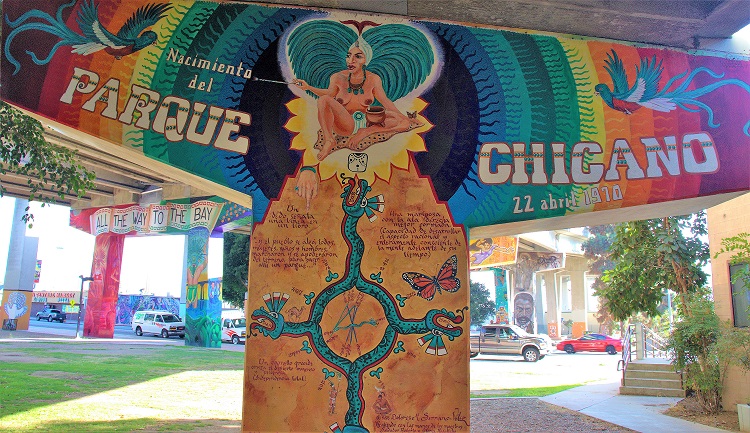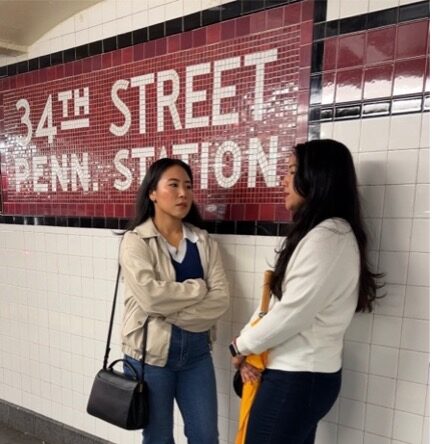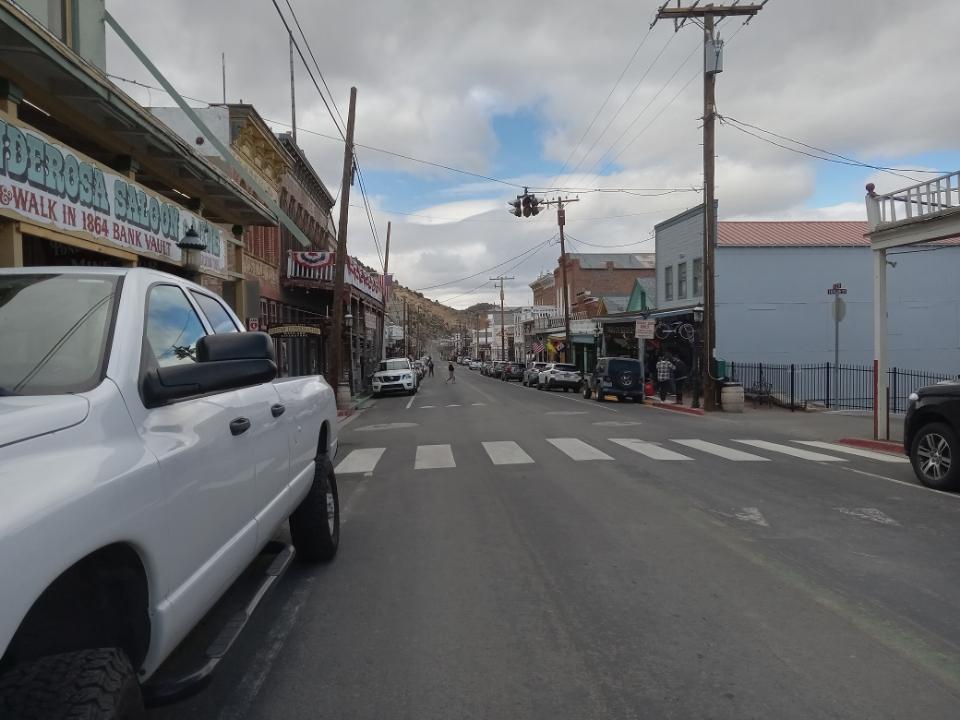(SAN DIEGO)— For more than 50 years, Chicano Park has stood as an open-air museum and beacon for Mexican American self-awareness.
Situated beneath the San Diego-Coronado Bridge, the park is home to a forest of murals that cover the bridge pillars. They depict Chicano, or Mexican American, leaders and political messages.
The park is used as a place to celebrate Mexican American culture with music, food, and dance.
An annual celebration, which takes place in April, marks the park’s “takeover” in 1970 when Chicano activists and residents protested to keep the city from building a highway patrol station instead of the park they were promised.
Bringing culture alive
When the takeover happened, the residents and supporters made the rally a celebration of cultural empowerment instead of a violent protest, according to Roberto D. Hernández, professor of Chicana and Chicano Studies at San Diego State University.
“The people brought shovels and said, ‘If the city won’t give us a park, we will build it ourselves.’ It was a whole inter-generational celebration. Not only were the youth there, but their grandmothers contributed by bringing food to the workers who were building a park with their own hands,” says Hernández.
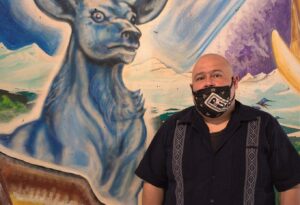
San Diego State University professor Roberto Hernández posing next to his favorite mural in El Centro Cultural [Credit: Shirley Ojeda]
“For folks who don’t have the context, they just look at the murals and think, they are nice funny images but don’t realize that to be able to present our culture outwardly, the murals, embodying who we are, that in itself is a political act, in the context of anti-Mexican American, Latino, and indigenous racism. The murals are a display of us saying we do belong here and we aren’t going anywhere. The murals are about being politically and unapologetically yourself,” says Hernández.
Hernández says the murals are more than cartoons drawn on pillars. He says they embody the true essence of the Mexican American, Chicano, movement.
One of its most recent murals, depicting immigrational enforcement, is named, “No border, No Wall.” It was painted by Sal Barajas, showing sympathy and love for those who immigrate to the U.S.
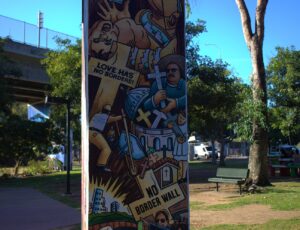
This powerful Mural is one of the most recently added to Chicano Park, named “No Border, No Wall” painted by Sal Barajas [Credit: Shirley Ojeda]
Each of the murals carry a significant story. One of the most popular is the mural painted by Victor Ochoa, “Hasta La Bahia-All the Way to the Bay,” added in 1978.
According to the Los Angeles Times, Ronnie Trujillo , a chairman of Chicano Park’s Steering Committee, wanted to extend the park to the San Diego Bay, which is about a mile from the park. Trujillo’s dream was never realized and the mural stands as a political reminder of his dreams.
The park was added to the National Register of Historic Places in 2013 and named a National Historic Landmark in 2017.
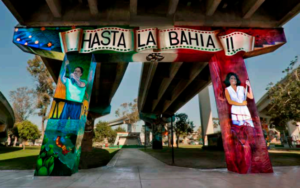
“Hasta La Bahia-All The Way To The Bay” mural by Victor Ochoa [Credit: Todd Stands]
An open door of awareness
Today, the murals on the park are more than an artifact of the past. They are a political symbol of Chicano awareness.
Angel Altamirano, a restoration artist who worked on the team to restore the “Aztec Archer” mural in 2011, believes the murals have such a strong political message because art is a means of communication that, “surpasses language barriers and speaks through emotion.”
“If the emotion behind the work is vague or flippant,” he adds, “then the communication between artists and viewer becomes muddied.”
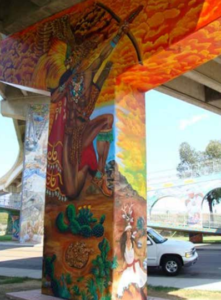
The Aztec Archer mural was painted by Vidal Aguierre in 1987 [Credit: Todd Stands]
Altamirano believes that the muralists painted the pillars to continue empowering its audience with Chicano connections.
“Art starts conversations, and it’s through these conversations that people connect and share their experience. Sometimes these interactions are so strong they become part of the community and culture itself,” he says.
Murals that empower its audience
Visitors to the park on a recent afternoon explained what draws them to the park.
“I never get tired of seeing art,” says Paula Diaz, a local resident who uses the park as a daily exercising outlet, and the murals as motivators. “As I run every morning throughout the park, I see through the paint and its symbolism. For me, the murals represent Mexican American culture, as it empowers us residents to continue to pursue our heritage, without hiding who we are.”
Since the art in the murals is well known, locally, art students from San Diego State University, such as Nancy Estrada, come to study the murals.
“When I stand in front of the murals in the park, I feel empowered to be a Chicana. I come to hang out with my friends but I also like when our college instructors give open-air classes here or in the Centro Cultural de la Raza, which is another extension of the park. The two places are an echoing reminder to never forget our culture,” says Estrada.
Photographer Hector Ruiz has been photographing Chicano Park’s murals as his college work.
“The heritage on the murals call out for spectators to return to them, to experience the struggle, the ceremonious touch of Mexican Americans, but most of all, to rejoice in the celebration of having a space in the city that provide a moment of pride that comes with the feeling of belonging.”
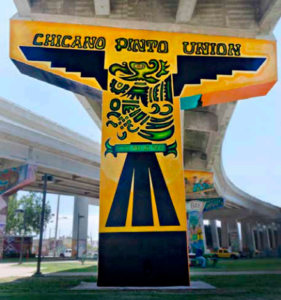
Chicano Pinto Union Mural painted by The Late Tony De Vargas, in 1978 [Credit: Todd Stands]
